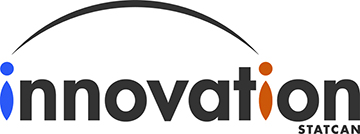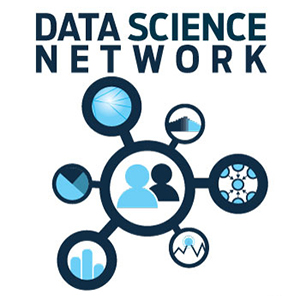This section contains information on the department's planned results and resources for each of its core responsibilities. It also contains information on key risks related to achieving those results.
Statistical information
Description
Statistics Canada produces objective, high-quality statistical information for the whole of Canada. The statistical information produced relates to the commercial, industrial, financial, social, economic, environmental and general activities and conditions of the people of Canada.
Planning highlights
Statistics Canada recognizes that relevant, timely and high-quality data are essential as the country's pandemic response evolves and moves toward recovery. The agency will continue to provide timely and accurate data that track the social, economic and health impacts of COVID-19, particularly on vulnerable groups. These data-driven insights guide leaders as they evaluate policy and program options to help Canada toward the road to recovery.
With data collection for the 2021 Census of Population and Census of Agriculture completed, Statistics Canada will focus on sharing results about the country's demographic and economic characteristics with Canadians. Thanks to their support, cooperation and understanding of the value of the census, 98% of Canadians participated, with a record-breaking 84% completing their questionnaire online. Information from the 2021 Census will help all decision makers evaluate the impact of the COVID-19 pandemic and plan for the future.
Providing user-centric services

- Disaggregated Data Action Plan
- Survey on Health and Access to Health Care
- Business Conditions Survey
- Survey on the Official Language Minority Population
- 2021 Census
- StatsCAN app
- Trust Centre
- Virtual Data Lab
- Data Analytics as a Service
Developing leading-edge methods

- Global Environment for the Economics Statistics Ecosystem
- Census of the Environment
- Cloud-based computing solutions
- Necessity and proportionality
- Canadian Statistical Geospatial Explorer
- Real-time Local Business Conditions Index
- Modelling
Building statistical capacity and leadership

- Strengthening the statistical system
- Indigenous Statistical Capacity Development Initiative
- Quality of Life Framework
- Sustainable Development Goal indicators
- Statistics on Indigenous Peoples Portal
- Data Science Network for the Federal Public Service
- Data Literacy Training
Sharing and collaborating

- Data2Care
- Canadian Drugs and Substances Strategy
- Northern Data Strategy
- Federation of Canadian Municipalities
- Education and Labour Market Longitudinal Platform
- Earth observation data
- Community safety statistics
- Canadian Centre for Energy Information
- Engagement strategy
Designing a modern and flexible workplace

- Human resources planning framework
- Employee Engagement Portal
- Equity, Diversity and Inclusion Action Plan
- Official Languages Strategy
- Virtual-by-design workplace
- Beyond2020
Providing user-centric services

To ensure that Canadians have information when and how they need it, Statistics Canada will continue to develop innovative ways to ensure that data are easier to access, share and use.
Producing data for a fairer, more inclusive Canada
Statistics Canada will continue to provide mission-critical data to guide leaders as they evaluate policy and program options to help Canada transition from pandemic response to recovery. The agency's Multi-year Consolidated Plan for Research, Modelling and Data Development focuses on the medium-term and potential long-term impacts of the COVID-19 pandemic on the health and the social and economic lives of Canadians. It will build on the wide body of work and varied expertise of Statistics Canada researchers.
Through the Labour Force Survey, the agency will monitor labour market conditions, including ongoing adjustments and structural changes brought on by COVID-19. In consultation with key stakeholders, such as Employment and Social Development Canada, Finance Canada, and the Bank of Canada, Statistics Canada will also expand the survey to cover emerging issues, such as the quality of employment.
The pandemic has sharpened existing socioeconomic impacts and disproportionately affected people who were already vulnerable to inequities. For that reason, Statistics Canada will integrate dimensions of equity, diversity and inclusion in its ongoing analyses. The agency will also look at disaggregating more data to improve public understanding of the characteristics of diverse population groups in Canada.
The pandemic has also had an unprecedented impact on many key aspects of quality of life, including health, social connections, mobility, employment and income. To meet the needs of Canadians, the agency's research will focus on expanding data sources to quantify the impacts on quality of life, particularly among recent immigrants, youth and women. The agency will apply a diversity and inclusion lens to all research. Where appropriate, specific attention will be paid to understanding the experiences of the most vulnerable groups that were hit hardest by the pandemic. The points at which gender, as well as ethnocultural identity, intersects with socioeconomic health will be of particular interest.
In response to Canada's Anti-Racism Strategy, studies on the social and economic experiences of ethnocultural groups will paint a more accurate picture of different aspects of their employment and income trajectories, social participation, and health and well-being
The agency will also begin to collect data for the Survey on Health and Access to Health Care, which will contribute to a better understanding of risk factors, symptoms and the prevalence of multiple chronic conditions. This includes post-COVID-19 symptoms, as well as the impact of conditions on Canadians' day-to-day lives and their experiences accessing health care.
Developing better data for better outcomes

Through the Disaggregated Data Action Plan, Statistics Canada is answering the call of Canadians seeking the detailed data they need to help address gender gaps, racism and other systemic barriers, to apply fairness and inclusion to decisions that affect the entire population.
The plan will produce better data so that solutions that address the root causes of inequities can be developed. Large datasets will be broken down where feasible, by categories such as gender, visible minorities, Indigenous peoples and people with disabilities. When possible, data will also be divided according to additional groups, such as individuals who identify as LGBTQ2+, children and youth, seniors, immigrants, veterans, Canadians with low income, and those in official language minority groups. Data will also be broken down by geographic level as well as by urban and rural population, as appropriate.
By analyzing how these various identities intersect, Statistics Canada can produce more detailed statistical information about the labour market participation, income, wealth and justice system interactions of all people in Canada. Additional insights will be produced through the new Sexual and Reproductive Health Survey initiative, which will assess the level of access and quality of care provided—particularly for at-risk Canadians—in the area of reproductive health services, sexually transmitted infections, and sexual knowledge and behaviours.
Combining social and business data for a post-pandemic world
Building on the estimates of business closures and openings that Statistics Canada has been releasing since the beginning of the pandemic, the agency is developing the Longitudinal Business Database to provide the data needed to study long-term characteristics and trends in business demographics beyond COVID-19.
In particular, a broader statistical framework needs to be developed that integrates business, social and environmental data. Statistics Canada is committed to taking an international leadership role in this area.
Producing business data to address lingering economic uncertainties
Through the Canadian Survey on Business Conditions, conducted through a partnership with the Canadian Chamber of Commerce, the agency will continue to monitor the impact of the nationwide economic shutdown on the country's businesses as Canada moves from pandemic response to recovery. This quarterly survey will be expanded to address ongoing data gaps and emerging issues, as Canadian businesses and policy makers continue to rely on the survey findings to adjust their operations and outlook in response to the persistent economic uncertainties caused by the pandemic.
Reflecting the evolving data needs of official language minority populations
Through the postcensal Survey on the Official Language Minority Population, Statistics Canada will provide detailed information on several aspects (education, access to services, etc.) of English communities living in Quebec and French communities living outside Quebec. The survey is also designed to be a key part of the data ecosystem on children of rights holders, with questions about the reasons parents choose (or intend) to send their children to minority language schools or not. The survey will give users in official language minority communities, as well as decision makers at all levels of government, the data they need to ensure that policies and programs reflect contemporary issues affecting official language minorities.
Introducing the 2021 Census: The COVID-19 census
With census data collected safely, securely and remotely during the pandemic, the results of the 2021 Census of Population will be released gradually according to seven major themes.
Analytical products will focus on population counts, families, households and marital status, among other themes. Additional releases will focus on Indigenous peoples, income, language, immigration, place of birth and citizenship, ethnocultural diversity, education, labour, and commuting. The unprecedented impact of COVID-19 on these various topics will be a particular focus of census releases.
In response to the evolving data needs of Canada's farmers and farming groups, the first major release from the 2021 Census of Agriculture will include new ways to access and visualize data, such as a new mapping tool. Also included will be new community profiles and a variety of data tables, analytical products and reference materials.
The agency will build on established partnerships with municipalities, non-profit organizations, schools, universities, libraries, Indigenous organizations, all levels of government, social media influencers and businesses to ensure that as many Canadians as possible can use census data as a strategic asset.
Engaging with Canadians in a digital world
Canadians want more data to be provided to them faster, in multiple formats and from multiple access points. That's why Statistics Canada is modernizing the way data are published, starting with the launch of the StatsCAN app, a free mobile application. It will provide trusted, unbiased facts, visuals and key information on demand, enabling users to stay on top of the country's latest statistical news anytime they want.
To ensure that statistical information reaches more Canadians and is accessible to a broader audience, the agency has launched StatsCAN Plus. This new platform will complement The Daily, issued every morning, to help Canadians better understand the rapidly changing world with plain-language data stories shared throughout the day. StatsCAN Plus will draw on a wealth of statistics to shed light on different aspects of the economy and paint an accurate portrait of all Canadians—young and old, rich and poor, healthy and frail, from all backgrounds and of all genders. Podcasts are another new way the agency is sharing data-driven insights with a wider number of Canadians, as a means to promote public understanding, data literacy and evidence-based decision making.
Building public trust
As a trusted data steward, Statistics Canada has not wavered in upholding its legal duty to collect, store, use and protect data responsibly. Through the agency's online Trust Centre, Statistics Canada engages in an ongoing dialogue with Canadians about how it collects and uses data on their behalf, while protecting their privacy and safeguarding the confidentiality of the data they have entrusted to the agency.
As part of its commitment to openness and transparency, the agency is making further enhancements to the Trust Centre to improve usability. This will enable Canadians to navigate it in a more intuitive way as they look for information about Statistics Canada's public consultations and data governance, which includes how the agency collects, processes, analyzes and shares data safely and securely. The Trust Centre will also show how data-driven insights produced by the agency contribute to the public good.
Monitoring social trends to better connect with Canadians
The use of leading-edge tools to track social trends enables the agency to better understand what matters to Canadians, based on their social media activity, as well as traditional news media. Building on the experience of the 2021 Census, such real-time analysis will enable Statistics Canada to meet more Canadians where they are, and to be more responsive and relevant in ongoing communications, outreach and engagement activities with the public.
Accelerating research through increased microdata access
As part of the country's research ecosystem, Statistics Canada provides data and insight that can help accelerate the pace of discovery and innovation. By providing the country's researchers with new ways to access the agency's microdata, the agency helps them generate new ideas and advance the goalposts of knowledge. The Virtual Data Lab, which was launched in 2021–22, will continue to provide a growing number of authorized researchers with timely and convenient access to an ever-expanding catalogue of microdata files on a secure online platform. Expanding the microdata holdings available to researchers is important in a knowledge-based economy, where innovation is driven as much by the quality of new ideas as by how quickly new ideas move from the lab to the marketplace.
Enhancing the virtual platform for data scientists and researchers
Statistics Canada will continue implementing Data Analytics as a Service (DAaaS), a cloud-based computing platform that is revolutionizing the way data scientists and researchers use and share statistical information. DAaaS provides users with virtual access to data and analytical tools on a secure and easy-to-use platform.
User feedback from the internal DAaaS portal will be used to improve the design and function of the external portal, planned for 2022–23. Continuous improvements to the DAaaS platform will enable software applications developed externally by citizen developers to be integrated.
Furthermore, users will see the addition of DAaaS Geo, a new platform with mapping tools for data analytics and visualization.
Customizing products and services
COVID-19 has underscored the need for policy makers, Canadian public health officials, researchers, the public and international agencies such as the World Health Organization to access timely and high-quality statistical data on the health and well-being of Canadians. As a result, the agency will continue to focus on delivering customized population health data for insights, integration and comparison.
To better meet user requests for customized geographic statistical products, a new census custom geography interactive tool will be developed and published. This self-serve tool will improve the user experience and simplify the production of census data tabulations for customized geographic areas.
Using leading-edge methods of data collection and integration

In a digital and data-driven world, the agency is identifying new methods of gathering data from third parties in both the public and private sectors. This includes integrating more alternative data sources that go beyond the agency's traditional survey-first approach to data collection. These new methods of collecting and analyzing data reduce the time and effort required of Canadians to fill out surveys. They also create opportunities to incorporate richer datasets into the agency's products to make them more timely and higher in quality. Such innovations are urgently needed at a time when the nation continues to respond to challenges brought on by the pandemic, against a backdrop of economic uncertainty and social inequality. As a first principle, Statistics Canada's operating context always includes protecting the privacy of Canadians and safeguarding the confidentiality of data that have been entrusted to the agency. This is not just a promise—it is the law in Canada.
Modernizing survey collection methods
Internally, Statistics Canada is adapting its own programs and services for a digital world, improving the speed and flexibility of its services. To modernize its data-collection methods, the agency is implementing initiatives such as web panel and omnibus surveys, using more administrative data, and applying machine learning.
Streamlining business processes
The Global Environment for the Economic Statistics Ecosystem project involves developing a new platform for economic statistics programs within the agency. It will include a full overhaul of the way work is carried out and the tools used to do it. The aim is to eliminate repetitive processes, allow more time on analysis, respond to new demands as required without impacting regular production, and enable resources to move freely between different sections in a common infrastructure.
Addressing the need for advanced technology solutions
Statistics Canada will continue to build on the progress made in 2021–22 by leading the Government of Canada in its adoption of cloud-based computing solutions to address the urgent need for advanced technology solutions in a digital and data-driven world.
Combining data securely to improve the accuracy of the 2026 Census
As planning begins for the 2026 Census of Population, Statistics Canada continues to identify responsible and innovative ways to reuse information that Canadians have already provided to the agency. This will determine which households do not return a completed census questionnaire, which Canadians are required by law to fill out.
By combining data that Statistics Canada already retains with third-party data sources, the agency can improve census accuracy and reduce the need for census employees to knock on doors, saving time and resources. To that end, the agency is replacing its existing Address Register, which has successfully supported census collection for 30 years, with the more updated Statistical Building Register. This new register will enable the agency to identify when a completed census questionnaire is not returned because a dwelling is actually vacant, no longer exists or is no longer used as living quarters.
Implementing best practices for privacy, data ethics and data governance
As a world-class national statistical office, Statistics Canada continues to develop best practices for privacy, data ethics and data governance. In collaboration with the Office of the Privacy Commissioner of Canada, the agency will continue to apply its ethical framework based on the principles of necessity and proportionality when designing approaches to gathering data.
Protecting data is of the utmost importance to Statistics Canada; it is a fundamental value embedded within the agency's culture. In keeping with the principles outlined in Canada's Digital Charter, the agency is adapting its secure infrastructure for data integration to be more relevant in a digital world where information moves more quickly and is more easily shared. In particular, the agency is updating its comprehensive set of protocols, methods and technologies that are used to securely store, combine and analyze government records, metadata and other administrative data. This initiative will result in stricter internal controls, as well as greater transparency and accountability, to ensure that, in a rapidly evolving digital world, data are always handled securely and kept safe.
Improving the ease with which Canadian firms do business
The North American Industry Classification System (NAICS) is the standard used to classify business establishments when collecting, analyzing and publishing statistical data related to the business activities of Canadian firms. These standardized codes allow for a high level of comparability in business statistics among Canadian, U.S. and Mexican firms.
To improve the way Canadian firms report their business activities to governments, Statistics Canada will continue to work with partners from the Canada Revenue Agency, provincial and territorial governments, and businesses to develop and promote a self-reporting tool. This tool enables companies to quickly and easily identify their NAICS codes with confidence during business registration and in tax software.
Expanding an analytical tool beyond pandemic response
In response to COVID-19, Statistics Canada partnered with other federal departments in April 2020 to develop an interactive web mapping tool called the Canadian Statistical Geospatial Explorer (CSGE). This tool enables users to explore Statistics Canada's data holdings and visualize those data by creating their own custom maps and downloading geo-enabled statistics into their own tools. In response to user demand, the CSGE will be expanded in 2022–23 to include new functions and tools.
Increasing capabilities to turn data into insights

Description - innovation statcan
Innovation statcan
As more data become available in a digital world, actionable insights from them will become increasingly valued. To position Statistics Canada for the high-value work of producing not only data, but also data-driven insights, the agency is expanding its data science and data modelling capabilities. The goal is to ensure that the agency has the capacity to participate in all steps required to transform raw data into useful insights—what is known as the data value chain. For example, to respond to users who require up-to-date data that reflect the rapidly changing conditions of a post-pandemic economy, the agency will integrate high-frequency data into the development of models for producing leading economic indicators.
In social statistics, microsimulation models and epidemiological models will be used to develop projections about the potential short- and long-term impacts of various health and social policies. These models are being used increasingly by federal departments and other users to assess, for example, the socioeconomic and health impacts of the pandemic. Given their success, the agency will continue working with other departments to develop new models that would enable users to explore the impacts of various social changes and public policies.
Using data to support the recovery of the tourism sector
To support the post-pandemic recovery of the tourism sector, Statistics Canada will rely less on survey-based data and focus on broadening its use of administrative data so that more timely snapshots of the industry can be produced for evidence-based decision making. For example, a new product, known as the Canadian Tourism Activity Tracker, is being continually refined to provide an up-to-date and detailed picture of how the sector is evolving beyond COVID-19.
Monitoring a highly fluid post-pandemic economy with real-time estimates
Statistics Canada has recently started producing more real-time estimates of key economic indicators to support agile and informed decision making, especially during the economic uncertainty related to the pandemic. For example, to monitor the impact of government pandemic relief benefits on low-income families, experimental weekly income estimates were produced during 2020 and 2021, providing timely estimates on the evolution of family income throughout the pandemic. The series will be continued in 2022–23.
Enabling digital innovation through open data access
Creating and reusing open-source software code and other data analytics tools, where possible, are important ways of providing more timely, high-quality insights to Canadians. These approaches align with the latest industry standards and emerging digital capabilities, while providing an effective, efficient, sustainable and high-quality means to produce timely statistics.
Statistics Canada will continue its activities to bring sustainable open environments and practices in 2022–23 and make them part of its culture. This initiative uses a thorough scientific experimentation approach to ensure that standards, practices and procedures accelerate the delivery of statistical products and statistics. It aims to advance and ensure the agile creation of new services for Canadians, while maintaining security, accessibility, confidentiality and privacy by leveraging open-source and cloud technology.
Taking stock of Canada's ecosystems: A world first
Statistics Canada will lead the development of the world's first Census of the Environment, which aims to improve Canadians' knowledge about the country's ecosystems, monitor related trends in ecosystems and promote better decision making as a means of improving how Canada responds to global environmental challenges. Crucial to the success of this program will be collaboration with other departments and external partners to incorporate scientific information and other sources of data.
Monitoring sudden shifts in business conditions
The pandemic has highlighted the need to improve the timeliness of statistics to monitor sudden and rapid shifts in economic activities. The Real-Time Local Business Conditions Index was launched to provide experimental statistics on a weekly basis. This index provides a near-real-time snapshot of business activities for seven population centres, accounting for approximately one-quarter of the Canadian population and half of businesses with employees.
Building statistical capacity and fostering data literacy

As Canada's national statistical organization, the agency is committed to sharing its knowledge and expertise to help all Canadians use data as a strategic asset to improve decision making and outcomes.
Strengthening the statistical system
Canadians entrust their information and data to Statistics Canada, and the agency has built a world-leading framework to protect and safely handle data without compromising confidentiality or the trust of Canadians. The agency balances rigorous internal governance with external advice from groups such as the Canadian Statistics Advisory Council, which provides recommendations that reinforce the independence, relevance and quality of the national statistical system.
The Canadian Statistics Advisory Council released its 2021 Annual Report. This is the council's second report, Strengthening the foundation of our National Statistical System, and it focuses on the characteristics of an effective, representative and robust national statistical system. The report provides three main recommendations to the Minister of Innovation, Science and Industry and the Chief Statistician: adapting governance and data stewardship to a digital society by taking leadership in supporting a national data system and developing partnerships; ensuring that statistical legislation reflects the needs of a modern, digital, national statistical system by, notably, updating the Statistics Act; and leveraging opportunities for addressing critical data needs to understand and address key social, economic and environmental issues facing Canadians.
Statistics Canada continues to take advantage of the council's expert advice on an ongoing basis, while working closely with partners in and outside the federal government to make tangible progress on the report's recommendations.
Adapting to the digital world
As part of an ongoing effort to modernize Statistics Canada's operations, a review of potential changes to the Statistics Act is being undertaken. This is being done to align with other federal legislative amendments in progress to ensure that Canada's national statistical system remains responsive to the needs and challenges of a digital world.
Measuring sustainable development
Since 2015, Statistics Canada has played a leading role in the United Nations Inter-agency and Expert Group on Sustainable Development Goal Indicators, which was mandated to develop and implement a set of indicators to measure global progress on the 17 goals. In 2022–23, the agency will publish data visualizations and analytical products that highlight Canada's progress toward the development goals, as well as profiles of community groups that have contributed meaningfully to these goals.
Measuring Canadians' quality of life
As part of the government's priority to build a more prosperous, inclusive and sustainable country, Statistics Canada is collaborating with Finance Canada to develop a better framework to measure the quality of life experienced by Canadians. In particular, the agency will launch a new data portal that will feature more than 80 quality-of-life indicators. Statistics Canada will also improve the framework's ability to report on two specific dimensions: fairness and inclusivity, as well as sustainability and resilience.
Harnessing data to support Indigenous self-determination
Statistics Canada continues to support Indigenous self-determination by working collaboratively with Indigenous leaders, organizations and governments on current and new data initiatives and in support of their statistical capacity to help close socioeconomic gaps.
The agency will continue to expand the data holdings available in its Statistics on Indigenous Peoples Portal, and is committed to making such data both accessible and meaningful.
In the spirit of reconciliation and partnership, Statistics Canada will continue to engage with the Assembly of First Nations, the Congress of Aboriginal Peoples, Inuit Tapiriit Kanatami, the Métis National Council, and Native friendship centres. The goal is to better understand their data needs and to support Indigenous communities in their use of data so they can make decisions and embark firmly on a path toward self-determination.
Investing in data science to better serve Canadians
As part of a multi-year effort to modernize its operations, Statistics Canada will focus on implementing an agency-wide data science strategy that was first developed in 2020–21. Data science is a promising field that uses emerging technologies, such as machine learning and artificial intelligence algorithms, to analyze large volumes of data in responsible and ethical ways. This results in actionable insights that create value for Canadians, while preventing any harm to vulnerable populations through bias, discrimination or a lack of diversity. To implement this strategy, Statistics Canada will focus on providing its employees with the training, tools and digital infrastructure to build internal data science capacity.

Description - Data Science Network
Data Science Network
Through the Data Science Network for the Federal Public Service, launched in 2020, the agency will also continue to implement a whole-of-government approach that enables knowledge and best practices in data science to be shared among all federal public servants. The focus in 2022–23 will be to build on the success of this network (which has grown to more than 2,300 members across 26 federal departments represented at the director-level committee) and develop data science capacity. This will be done by hosting workshops on topics of interest to network members and identifying opportunities for collaboration on common projects across departments. To support the growth and retention of public service employees, career paths for data scientists will be developed.
Fostering data literacy to encourage evidence-based decision making
Through its Data Literacy Training Initiative, launched in September 2020, Statistics Canada is committed to building statistical capacity with partners and fostering data literacy among Canadians to enable more end users—whether they are businesses, governments or individuals—to make evidence-based decisions. To date, more than 25 online training videos can be found in the agency's learning catalogue. Moving forward, Statistics Canada will continue to expand those training resources and share them freely with users.
Collaborating and engaging with partners

In collaborating with public and private sector partners, Statistics Canada continues to identify new ways to collect and share data, while maintaining the high standards of trust that Canadians have come to expect from their national statistical agency. These partnerships will continue to grow as the country's pandemic response evolves.
Tracking impacts of the changing nature of jobs
Many Canadians have experienced changes to where and how they work because of COVID-19. These changes to employment—while accelerated by the pandemic—were already underway before its onset, having been triggered by the impacts of globalization, technological innovation and demographic change. To better track these impacts on the quality of Canadians' jobs, Statistics Canada will collaborate with Employment and Social Development Canada, as well as international bodies, to develop a framework for defining and collecting information about new forms of employment, including gig work, that is coherent with international standards.
Collaborating with provinces and territories to improve health outcomes
A new project called Data2Care is being launched to better integrate more health data from the provinces and territories, and produce more timely insights that achieve better health outcomes for Canadians. Statistics Canada will collaborate with provincial and territorial health partners, local health authorities, pan-Canadian health organizations, and non-governmental organizations that focus on population health framework topics.
Collaborating to better track opioid deaths
The agency continues to explore trends in provisional causes of death, including drug overdose, and their effect on excess mortality. Statistics Canada has been engaging with Health Canada and other federal partners in developing the Canadian Drugs and Substances Strategy. Through engagement with the Public Health Agency of Canada and provincial and territorial partners, the agency is building statistical capacity and playing a leadership role in providing more timely and accurate data on the impacts of the opioid crisis.
Partnering to improve knowledge about northern Canada
Working with the territories, Indigenous organizations and federal partners, Statistics Canada is developing the Northern Data Strategy to improve the accuracy and detail of statistics for northern and Arctic Canada. This project will address the unique challenges of collecting data about small populations spread across a vast geography. The goal is to develop innovative strategies that can produce meaningful, high-quality data from small sample sizes; reduce the number of survey questions that residents are asked to respond to; extract actionable insights from existing data sources; and empower northern communities to use data as a strategic asset to make informed decisions.
Improving local data for better decision making
Municipalities in Canada provide many of the services Canadians need to live, work and play. COVID-19 has underscored the critical need for all levels of government to have timely, high-quality data about local economic conditions, as well as socioeconomic and health impacts. To respond to the growing data needs of municipalities, Statistics Canada has initiated four projects in partnership with the Federation of Canadian Municipalities. All four projects aim to expand the types of data available at the local level, from large cities to smaller communities. This partnership will result in new ways to address important data gaps at the municipal level while building on existing collaborations, such as the Canadian Housing Survey and Canada's Core Public Infrastructure Survey.
Collaborating to improve education and labour-market outcomes
In collaboration with Employment and Social Development Canada, as well as provincial and territorial partners, Statistics Canada has developed a data platform that enables detailed analyses to be conducted about the lifelong education and labour-market outcomes of Canadians. This Education and Labour Market Longitudinal Platform will be further developed in collaboration with partners to determine which key administrative or survey data files related to education and labour-market statistics should be added in the coming years.
Canadian Centre for Energy Information
The Canadian Centre for Energy Information (CCEI) will continue to provide value to Canadians regarding energy information by integrating federal data and facilitating an exchange of data across federal departments. Building on its solid foundation of federal, provincial and territorial partnerships, the CCEI will continue to collaborate meaningfully with the provinces and territories to ensure multilateral decision making and to set priorities for the program. In partnership with the Energy Transition Dialogue, the CCEI will work with energy modellers across the country to understand their data needs and to provide access to key datasets for their work in providing energy policy insights. The CCEI will continue to seek out and establish new external partnerships with municipalities to enhance collaborative approaches and will expand its data inventory to include more municipal data sources.
Making a difference on the world stage
As a member of more than 190 statistical groups, Statistics Canada is a world leader in upholding the rigorous standards set by international statistical organizations. This compliance means the agency not only produces data based on the highest standards, but also conforms to common standards that enable data to be shared internationally and benchmarked against those of other countries.
In addition to participating in multiple steering and expert groups, which all work toward developing a solid framework to support evidence-based decision making, the agency will continue to actively lead as
- chair of the High-Level Group for the Modernisation of Official Statistics
- chair of the Committee on Statistics and Statistical Policy of the Organisation for Economic Co-operation and Development
- vice chair of the Conference of European Statisticians
- executive committee member of the Statistical Conference of the Americas of the Economic Commission for Latin America and the Caribbean
- co-chair of the Network of Economic Statisticians.
Furthermore, Statistics Canada will refine and develop its coordinated whole-of-agency engagement strategy in 2022–23. This will include defining roles for establishing, maintaining and enhancing partnerships with external parties. This comprehensive, agency-wide approach will enable Statistics Canada to provide data insights in a more tailored way and leverage data solutions through engagement with other organizations. By building on the success of past and current engagement programs, the agency will be able to optimize new and emerging engagement opportunities and coordinate a targeted, user-centric approach to supporting agency priorities.
Building an agile workforce and workplace

Building an agile workforce and workplace requires timely and effective resources so that Statistics Canada can manage its most precious asset: people. It also means giving these people access to the services that enable them to deliver results, mitigate organizational challenges and pursue business opportunities.
In 2022–23, Statistics Canada will launch a renewed human resources planning framework that enables leaders to establish individualized strategies for staff recruitment, retention and development, as well as to track their progress toward their people-management goals. The agency will also conduct a comprehensive review of its staffing processes and services to better support managers in making timely and effective hiring decisions.
Statistics Canada is also committed to developing a workforce that is more agile and responsive to the evolving needs of the Canadians it serves. To that end, the agency is investing in continuous learning and training opportunities for employees at all levels: managers, recruits and mid-career professionals. For example, experienced data science employees will be encouraged to participate in communities of practice to stay on top of emerging trends and technologies in that field.
Taking the pulse of employees to respond to their evolving needs
Statistics Canada will continue to create and share data through partnerships to improve human resources analytics within the agency and support other organizations in the public service. For instance, in 2022–23, Statistics Canada will launch the Employee Engagement Portal. Through this portal, it will conduct short surveys at regular intervals to gain employee feedback and adjust its well-being and corporate strategies to respond to their needs in real time.
Leveraging its expertise in organizational health, the agency will also partner with academics and organizations across the federal public service to produce and share research about organizational psychology and employee wellness.
Building a diverse workforce
The agency will continue to prioritize building a workforce that reflects the diversity of Canada's population. Following the 2021 launch of its multi-year Equity, Diversity and Inclusion Action Plan: Moving Forward Together, Statistics Canada will focus on implementing key commitments within the specified timeframes. Relationships with internal networks focused on promoting employment equity will continue to be strengthened. As always, data-driven insights and evidence-based metrics will continue to guide decisions and solutions that result in a more diverse workforce and inclusive workplace.
Employment equity will remain a mandatory consideration in hiring processes, while barriers embedded within staffing processes will be identified and eliminated. Equity-deserving representation will be better reflected on hiring boards, and initiatives such as name-blind evaluations will continue to be explored. Indigenous, Black and other racialized employees will be given prioritized access to official language training. The agency will also focus on developing strategies to increase the representation and advancement to senior ranks of women, Indigenous people, members of groups designated as visible minorities and people living with disabilities.
To collect more accurate data on workforce diversity, Statistics Canada will launch a campaign to encourage employees belonging to designated equity groups to self-identify, explore ways to produce more detailed data on various visible-minority groups, and track the representation and advancement of Black and Indigenous employees in accordance with the Privy Council Office's Call to Action. Statistics Canada's Letter on Implementation of the Call to Action on Anti-Racism, Equity and Inclusion is also available to Canadians. To promote greater transparency, metrics on workforce representation among designated equity groups will be shared with employees on a quarterly basis, as comprehensively as confidentiality policies allow.
Promoting official languages in the workplace
Achieving an inclusive workplace means that all employees feel empowered to contribute to their full potential, including feeling at ease working in the country's official languages. To that end, Statistics Canada will continue implementing an agency-wide strategy to ensure that employees have access to the necessary language training to fulfill the operational requirements of their jobs. The strategy will address the training needs of existing supervisors while also addressing the needs of employees in the early years of their careers.
Transitioning toward the workplace of the future
In 2020, at the onset of the pandemic, Statistics Canada fast-tracked initiatives that were already underway to enable employees to work remotely. Its vision for the future of the workplace is being guided by an overwhelming consensus among its employees that the ability to work remotely, securely and safely is here to stay. That is why the agency is adopting a vision of the workplace that is "virtual by design." The virtual-by-design environment is an opportunity to achieve the right balance between a flexible, productive and agile workplace and workforce.
This flexibility will enable the agency to recruit and retain top talent from across the country, and build a diverse and inclusive workforce. This transition also means Statistics Canada is committed to promoting an inclusive work environment where all employees, regardless of their physical location, have a fair and equitable opportunity to contribute to the agency and have equal access to opportunities for career advancement.
Making progress on public service renewal
As part of its public service renewal plan, known as Beyond2020, the Government of Canada is committed to developing a public service that is more agile and responsive to the evolving needs of the Canadians it serves. To that end, Statistics Canada will continue to invest in its employees to develop a culture of continuous improvement and innovation. This includes equipping employees with tools, training and experimentation opportunities to build inclusion and resilience, and to deliver greater value to Canadians.
Mitigating risk in an agile manner
By continuously monitoring its internal and external environment, Statistics Canada addresses uncertainties related to its core responsibilities by adopting integrated risk management to identify, assess, prioritize and respond to risks at every level. This approach guides the agency's business planning to ensure the timeliness, reliability and quality of its statistics. The agency has identified, assessed and ranked the following six corporate risks and developed corresponding strategies to mitigate each risk:
Resources
Risk: Statistics Canada may not have the workforce or the workplace it requires.
Mitigation strategy: Strengthen the priority-setting process for human resources and ensure agile staffing and talent-management practices are in place.
Accuracy and integrity
Risk: Statistics Canada may not have access to or release accurate statistics.
Mitigation strategy: Strengthen instruments for validating methods, processes and tools to support the Policy on Scientific Integrity, and ensure the Official Release error-reporting system is in place to correct the record.
Transformation
Risk: Statistics Canada's transformation activities may not transform fast enough to meet the expectations of users.
Mitigation strategy: Establish a refined business plan, in addition to ensuring strong governance and integrated business processes are in place; develop quality indicators to identify and address gaps; develop strategic relationships with key partners; and increase engagement with data users to better understand and respond to their needs.
Public trust
Risk: Statistics Canada may not be perceived as a trusted national statistical office.
Mitigation strategy: Communicate proactively and transparently with Canadians to build awareness and promote public trust.
Relevance
Risk: Statistics Canada's statistical information and services may not meet the evolving needs of users.
Mitigation strategy: Continue to modernize internal operations to address the evolving data needs of external stakeholders.
Privacy and confidentiality
Risk: Statistics Canada may experience a material privacy breach or wrongful disclosure of information.
Mitigation strategy: Ensure that strict controls and safeguards are in place to manage and protect the vast amount of confidential and sensitive information; strengthen the agency's data ethics and governance processes; and regularly assess its information security and information technology posture.
| Departmental results | Departmental result indicators | 2022–23 target | Date to achieve target | 2018–19 actual result | 2019–20 actual result | 2020–21 actual result |
|---|---|---|---|---|---|---|
| High-quality statistical information is available to Canadians | Number of post-release corrections due to accuracy | 0 | March 31, 2023 | 2 | 1 | 6Tablenote 1 |
| Percentage of international standards with which Statistics Canada conforms | 90%Tablenote 2 | March 31, 2023 | 88% | 88% | 88% | |
| Number of statistical products available on the website | 47,680Tablenote 3 | March 31, 2023 | 35,920 | 37,254 | 40,738Tablenote 4 | |
| Number of Statistics Canada data tables available on the Open Data Portal | 8,450 | March 31, 2023 | 6,944 | 7,386 | 7,755 | |
| High-quality statistical information is accessed by Canadians | Number of visits to Statistics Canada website | 24,500,000Tablenote 3 | March 31, 2023 | 19,752,776 | 20,285,269 | 28,193,955Tablenote 4,Tablenote 5 |
| Number of hits on Statistics Canada's Application Programming Interface (API) | 4,055,000Tablenote 6 | March 31, 2023 | Not available | Not available | 3,899,779 | |
| Percentage of website visitors that found what they were looking for | 78% | March 31, 2023 | 79% | 78% | 77% | |
| Number of interactions on social media | 1,200,000Tablenote 3 | March 31, 2023 | 358,673 | 521,441 | 1,211,316Tablenote 4,Tablenote 5 | |
| High-quality statistical information is relevant to Canadians | Number of media citations on Statistics Canada data | 78,000Tablenote 3 | March 31, 2023 | 74,657 | 56,921 | 253,171Tablenote 4 |
| Number of journal citations | 38,000 | March 31, 2023 | 22,176 | 26,505 | 33,596Tablenote 4 | |
| Percentage of users satisfied with statistical information | 80% | March 31, 2023 | 80% | 80% | 80% | |
|
||||||
The financial, human resources and performance information for Statistics Canada's program inventory is available on GC InfoBase.
| 2022–23 budgetary spending (as indicated in Main Estimates) | 2022–23 planned spending | 2023–24 planned spending | 2024–25 planned spending | |
|---|---|---|---|---|
| Gross planned expenditures | 616,663,357 | 616,663,357 | 560,200,355 | 555,042,606 |
| Respendable revenue | -120,000,000 | -120,000,000 | -120,000,000 | -120,000,000 |
| Net planned expenditures | 496,663,357 | 496,663,357 | 440,200,355 | 435,042,606 |
Financial, human resources and performance information for Statistics Canada’s program inventory is available on GC InfoBase.
| 2022–23 planned full-time equivalents | 2023–24 planned full-time equivalents | 2024–25 planned full-time equivalents | |
|---|---|---|---|
| Gross planned expenditures | 5,889 | 5,387 | 5,367 |
| Respendable revenue | -1,181 | -1,181 | -1,181 |
| Net planned expenditures | 4,708 | 4,207 | 4,186 |
The change in planned resources from 2022–23 to future years relates largely to the cyclical nature of the Census Program, for which activities peaked in 2021–22 and will wind down thereafter. Statistics Canada expects to maintain its capacity in future years for delivering ongoing statistical programs, with no significant shifts in resources. Also reflected in all three years are planned resources for several new initiatives from Budget 2021. These initiatives include Strengthening Long-term Care and Supportive Care, Supporting Access to Sexual and Reproductive Health Care Information and Services, Enhancing Business Condition Data, Better Understanding Our Environment, Better Data for Better Outcomes, and Measuring What Matters.
Financial, human resources and performance information for Statistics Canada's program inventory is available on GC InfoBase.